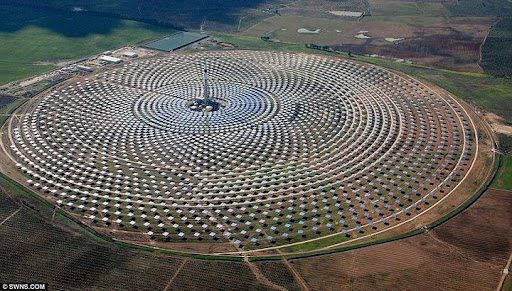The challenge facing solar thermal technology and its quest to compete with other energy sources was underlined in a proposal released late last month by Beyond Zero Emissions, for a replacement for the ageing and highly polluting Playford coal-fired power stations in Port Augusta.
BZE, along with a host of other environmental groups, the local mayor and, it seems, much of the local population, want the current power stations replaced by solar thermal energy, using solar towers with capacity of 760MW, and a further 90MW of wind turbines.
BZE estimates the current levellised costs of energy (LCOE) of solar thermal to be $250-$300/MWh. Even with storage, and the ability to dispatch into peak periods between noon and 6pm, when the electricity price averages around $150/MWh, the nascent technology still falls short without further assistance such as loan guarantees or feed-in tariffs.
Hence the need to reduce costs. The International Energy Agency last year said it expected most clean technologies – be they renewables with storage, or current baseload options with carbon capture – will ultimately group around the $100/MWh market, with variations depending on location and resources.
Australia is regarded as one of the most prospective regions for solar thermal because of its huge solar resource. German industrial giant Siemens estimated solar thermal could account for around 30 per cent of the country’s energy supply by 2030, and it comprises a key part of the various visions for 100 per cent renewables presented by the likes of BZE, the UNSW team led by Ben Elliston and Mark Diesendorf , and solar thermal pioneer David Mills.
But solar thermal has further to travel down the cost curve. Although parabolic troughs have been deployed since the 1980s, the most recent technologies such as solar towers and storage options are only now being deployed. The race is on to hit the sweet spot.
One such project is being undertaken by Australian developer Vast Solar, which has received a grant from the Australian Solar Institute to test high temperature receivers and a new approach to thermal storage systems as it seeks to bring the LCOE from solar thermal technology to below $100/MWh.
The project will allow Vast Solar, an Australian company established only in 2009, and its partners University of NSW and Victoria’s RMIT, to expand its current solar tower test facility near the western NSW town of Forbes, more than trebling the size of the array to a capacity of around 1.2MWh.
CEO Andrew Want, who is also head of the Australian Solar Thermal Energy Association, says the company is determined to try to bring the LCOE down to the cost of wind, where its ability to store energy will give it significant advantages.
Is $100/MWh achievable? Want says his team is increasingly confident it is. “A couple of years ago that would have been thought to be an outlandish claim. But it is becoming much clearer that solar thermal and central receiver technology can get there quite quickly.” And he points out that the US Department of Energy’s Sunshot initiative aims to reduce the cost of solar thermal to as low at $60/MWh by 2020.
The Vast Solar project has two key elements. One is seeking to identify, or confirm, the temperature “sweet spot” for receivers. It is currently thought to be around 540°C, but UNSW and RMIT will assess the design, materials and performance improvements than can be delivered at temperatures greater than 560°C.
The second part of the project is in the storage. Want’s team is saying little about its “unique” integrated storage technology at the moment, other than it is not using the same medium – such as molten salts – as both the working fluid and storage fluid, as occurs in other projects.
“We are using a different approach,” Want says, “and that does bring specific advantages. It’s not the solution being used around the world at the moment.”
Want says there is a growing consensus that solar thermal energy can, and should, get below $100/MWh. The question is how quickly, and how it can be done, ultimately, without requiring feed-in tariffs and other subsidies.
“It’s all about focusing on getting the cost of solar arrays and all related systems down. The large part of the cost is in the reflector array – if you can bring the costs of that down, then it becomes more efficient.”
Keith Lovegrove, a solar thermal expert at IT Power, who is the lead author of an upcoming report on solar thermal, says it is becoming increasingly clear that solar storage technologies will help reduce the LCOE of solar thermal, rather than add to them, as had previously been assumed. This is because storage and dispatchability means that the size of the solar field can be reduced, as can the size of turbines.
Vast Solar is using local technologies and was established with private funding from a range of sources, including Twynam Agricultural Group, which owns the land where the facility is located.
“If we can get the (cost of solar thermal) down to where it can compete at price with wind, once you do that, solar thermal provides lots of advantages,” Want says. “And the system becomes more scalable if you can get capex down to the right levels.”







